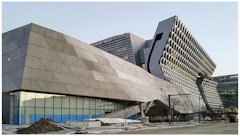BioFacades Classification
Coauthors:
Mary Ben Bonham, Department of Architecture + Interior Design, Miami University, Oxford, OH, USA [corresponding] [presenting at the…


The design of complex, high-performance facades involves balancing attention towards principles of material selection, thermal and moisture


The iconic building principal incentive is to be visually attractive or stand out, for this purpose three main features must be accomplished: have a
At the core of facade design is the concept of interdisciplinarity, a bridge between concept and materialization apt to relay a built form




Designing a sustainable rainscreen wall assembly has become an essential part of most new construction projects. Industry principles and energy codes

The prevalence of fully glazed facades in modern office buildings has been steadily increasing, primarily driven by architects' focus on aesthetic


